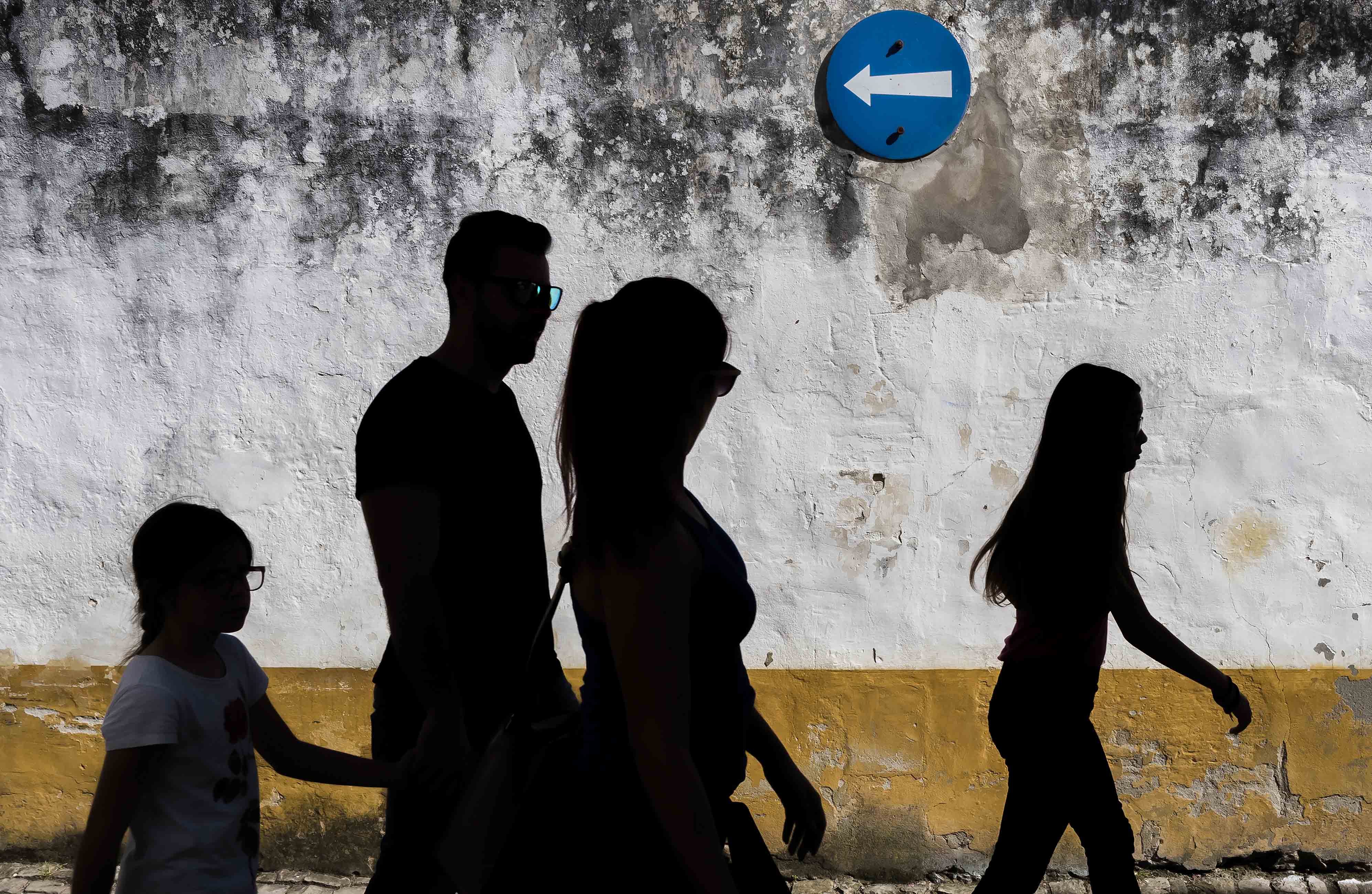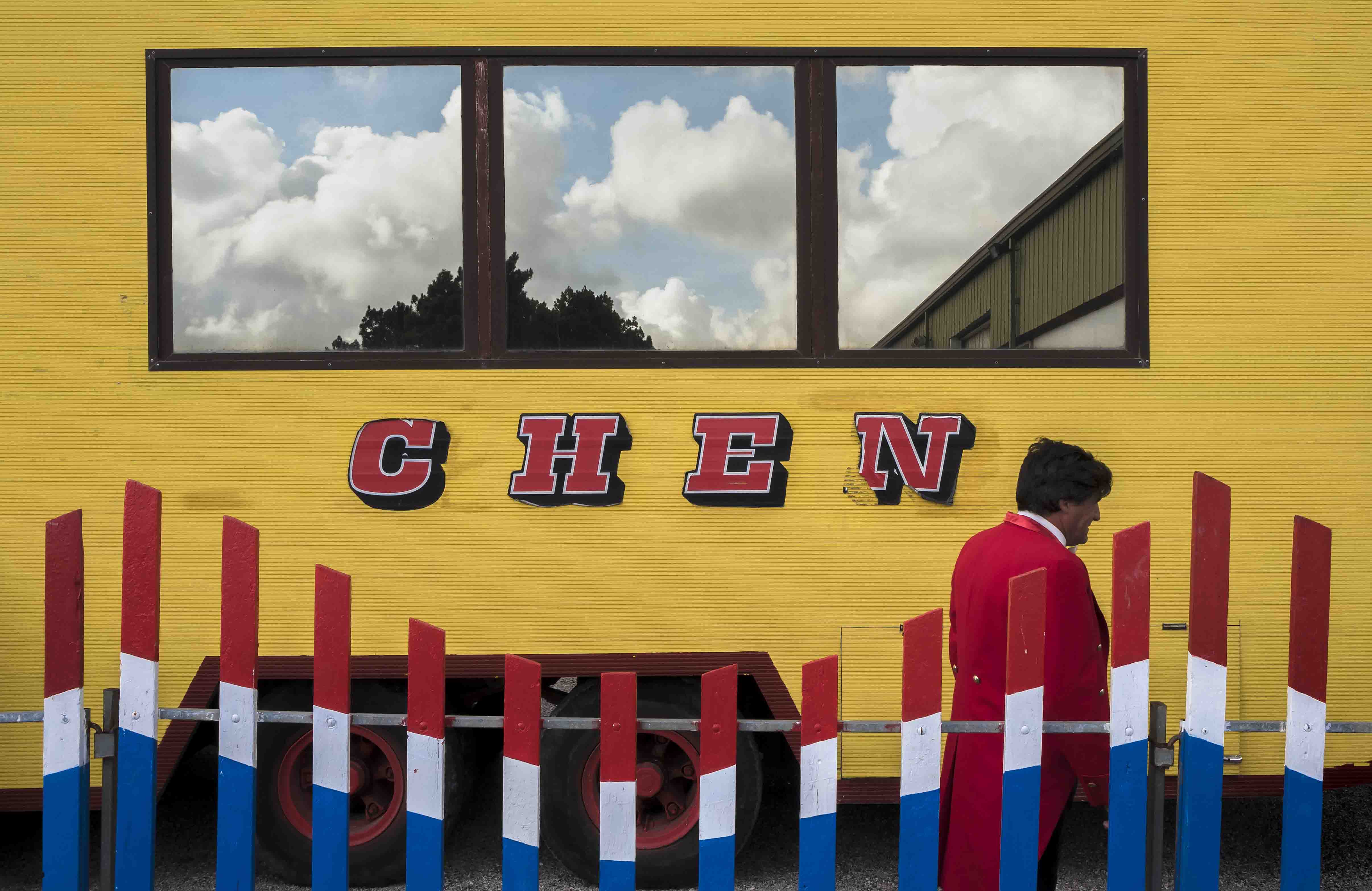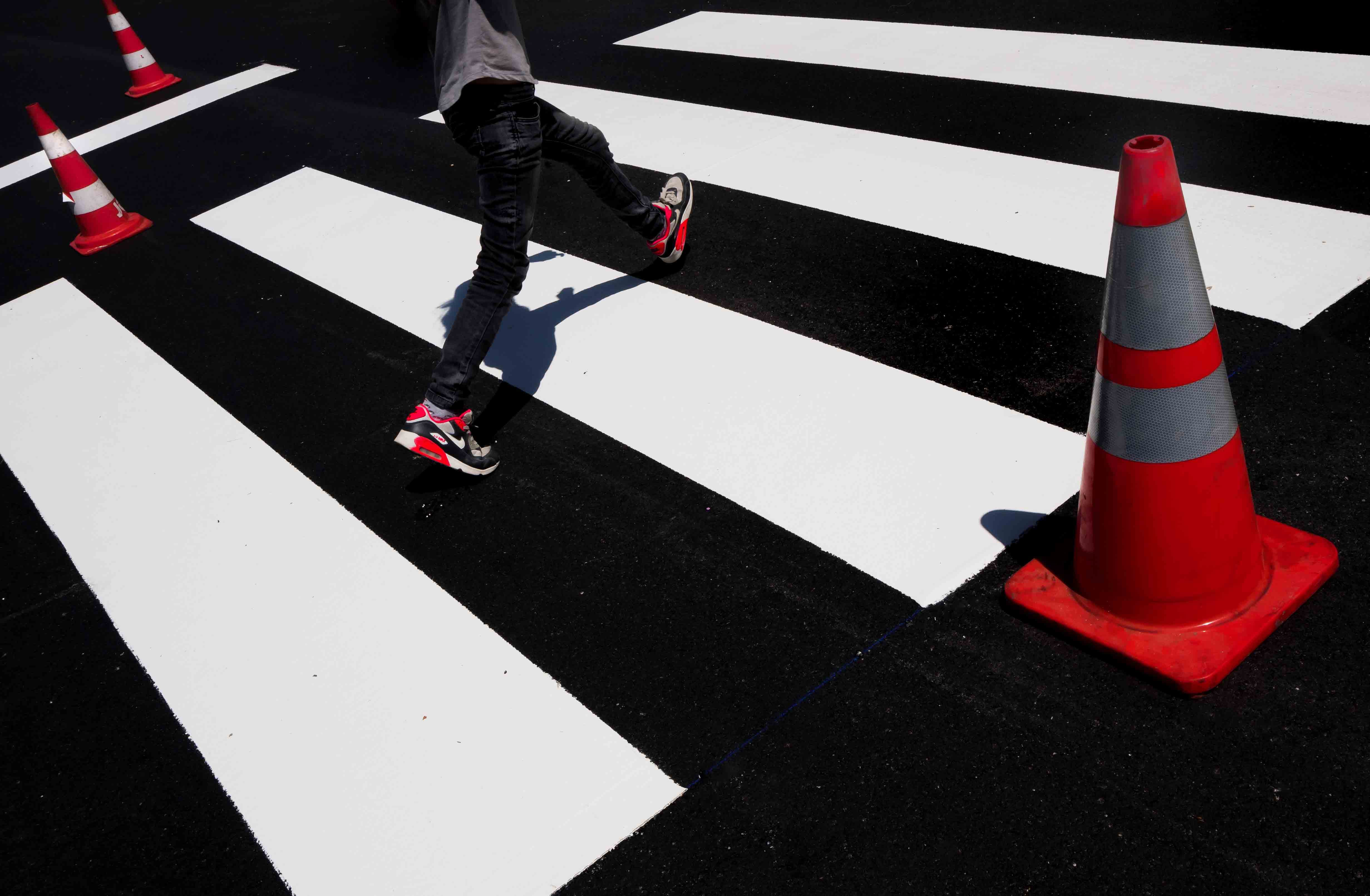Just a few minutes on Google Street View reveals that Vasco Trancoso’s home town is a pretty exciting place for a street photographer. The hard, direct and piercing Portuguese sun creates deep, sharp-edged shadows in the narrow streets. And every now and then those dense blankets of shade are slashed open by bright blades of golden light that streak across the pavements to play on the faces of the vibrant buildings. Contrasts of highlights and shade mix with conflicting colours, textures of wall tiles and flaking paint, and bejewelled by the shapes of the local going about their daily life against a backdrop of solid architectural lines. You can see this too in Vasco’s new book, 99 – a visual exploration of the compositional potential of a town called Caldas da Rainha.

There’s a strong running theme in 99 of people silhouetted against bright backgrounds
Unlike a lot of photographers who claim to be documenting the life or people of a place, Vasco is happy to admit he is rather more interested in creating visually stimulating pictures. ‘Above all,’ he says, ‘my work is an interpretation of the reality. I don’t try to describe places I shoot faithfully, but rather to fictionalise the reality to discover myself.’
I like this idea as it frees us to shoot what pleases us instead of having to think the whole time about whether the picture is a useful part of some deeper story. We don’t have to engage in worrying about issues, the truth or the viewer very much at all, and working this way liberates the photographer to concentrate on style. We can take things the way they present themselves to us – which is a nicely laid-back way of working. We are always being told we need to embed ourselves, to get to the bottom of the story, but here’s Vasco telling us he takes life as it comes and at face value.

Even Vasco’s self-portrait is very much in keeping with his style – shadows and geometry
Staying close to home
Vasco used to be a gastroenterologist but when he retired he decided to dedicate himself to photography. Like most of us, he took pictures when he was younger but it wasn’t until he stopped working that he had the time to devote to it seriously. He took up street photography and concentrated on working in the region in which he lives, with its beach (Foz do Arelho) and Óbidos Castle. Most of us instinctively look far from home when on the hunt for exciting pictures but Vasco isn’t interested in the easy life.
‘On the one hand, photographing close to home is a kind of tribute to my city and allowed me a rediscovery of the place. Trying to see the miracles of light and colour that happen in everyday life, that we often don’t notice because we are very used to going through the same places for many years, was a challenge. I think creating something special out of ordinary moments is more difficult to do in our own city – where everything seems so boring and banal. This also gave me the opportunity to make a body of work in a place that had not yet been photographed in a creative way, whereas all the big cities in the world have been photographed exhaustively. It was an exercise in the ability to observe and be happy photographing a place where I also feel happy.’

Here the woman appears to be almost drowning in the colours around her
Vasco’s book is extremely colourful, with many pages on which colour is the subject over any of the physical elements in the scene. It is hard to believe that he used to shoot his street work exclusively in black & white. He tells AP that in 2016 his ‘photographic voice’ changed without him really thinking about it.
‘Actually I love colour work more because it allows me to highlight certain elements and patterns in an image. Colour brings out extra meaning and better depth, layers and three-dimensionality – improving object recognition and the relationship between elements within the frame. In my interpretation of the street carnival colour is an important protagonist – avoiding a merely illustrative role. I like to enhance compositions with dark areas, transforming the image into an almost abstract qualities of light, dark and colour that most photographers find exciting. ‘I tried to avoid a title for the book that was pretentious, but needed something that means the same in Portuguese and English because the book is bilingual. The simplest option was to choose the total number of photos: 99.’ The book is more than bilingual as it is the pictures, not the text, that do the talking.

Bold primary colours and conflicting lines provide strong visual impact
Weapon of choice
Interestingly, all the pictures in this book were shot on the original Leica Q compact camera. Vasco used to use a Canon EOS 5D III and a 5DS R with a wide zoom and a standard zoom, but found them too heavy and that their size made him stand out in the street. Switching to the Leica Q allows him to go unnoticed because the camera is so much smaller, but it also has a silent shutter – and Vasco likes the colours it produces.
‘I am very adapted to this camera and this makes everything easier. I use the neck strap, but sometimes wrap it around my wrist to make it even less obtrusive still. I realised with the cameras I previously used my photographic voice was best expressed with a wideangle between 24mm and 35mm, so the 28mm of the Q allows me not only a great depth-of-field but broad perspectives and compositions with a greater distance between the various different layers.’

Great expanses of black are often punctuated with splashes of colour
Vasco’s images all have extensive depth-of-field demonstrating a front-to-back sharpness that pulls in the close subjects as well as the environment in which they are captured. The effect lets us know that the backgrounds here are exactly as important as the foregrounds, and it is only the light and the colours used that separate one from the other. The depth-of-field also means that Vasco doesn’t have to be too concerned with where the focus is in the shot, as on most occasions the camera won’t be able to miss. ‘In general I work with a high enough ISO, for example ISO 800, to give me a shutter speed of 1/500sec or 1/1000sec when I’m using a small aperture to gain that extensive depth-of-field. I look for a speed of around 1/1000sec because I often shoot while walking. This is all very much easier in Portugal because we usually have bright light and sunny days.’

Vasco’s tips for street photography
* Always have your camera with you, and go out a lot with it. You never know what will happen.
* Live photography with passion – without restrictions and stay focused on each image you are making.
* Look once and then go back to look again. Revisit the same places and try to discover new opportunities.
* Patience is the key. To form your own photographic voice takes a long time. Without denying all the influences that you may have – be genuine. Try to be original.
* Find inspiration by frequently looking at the books and exhibitions of great photographers.







